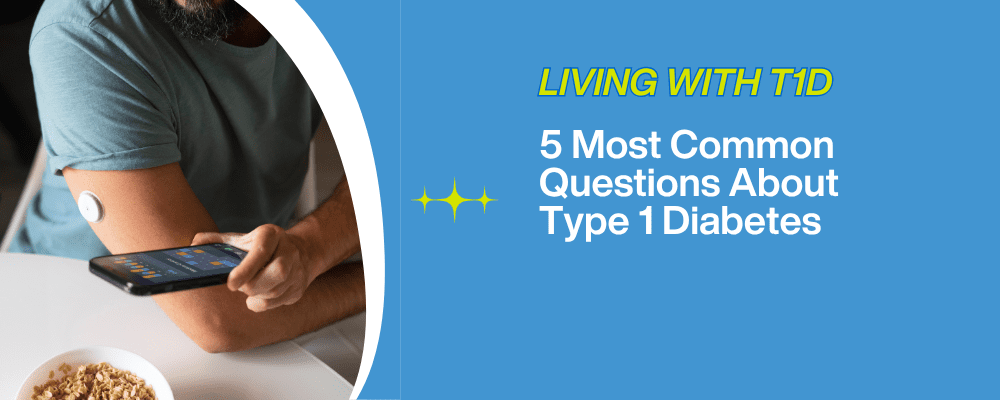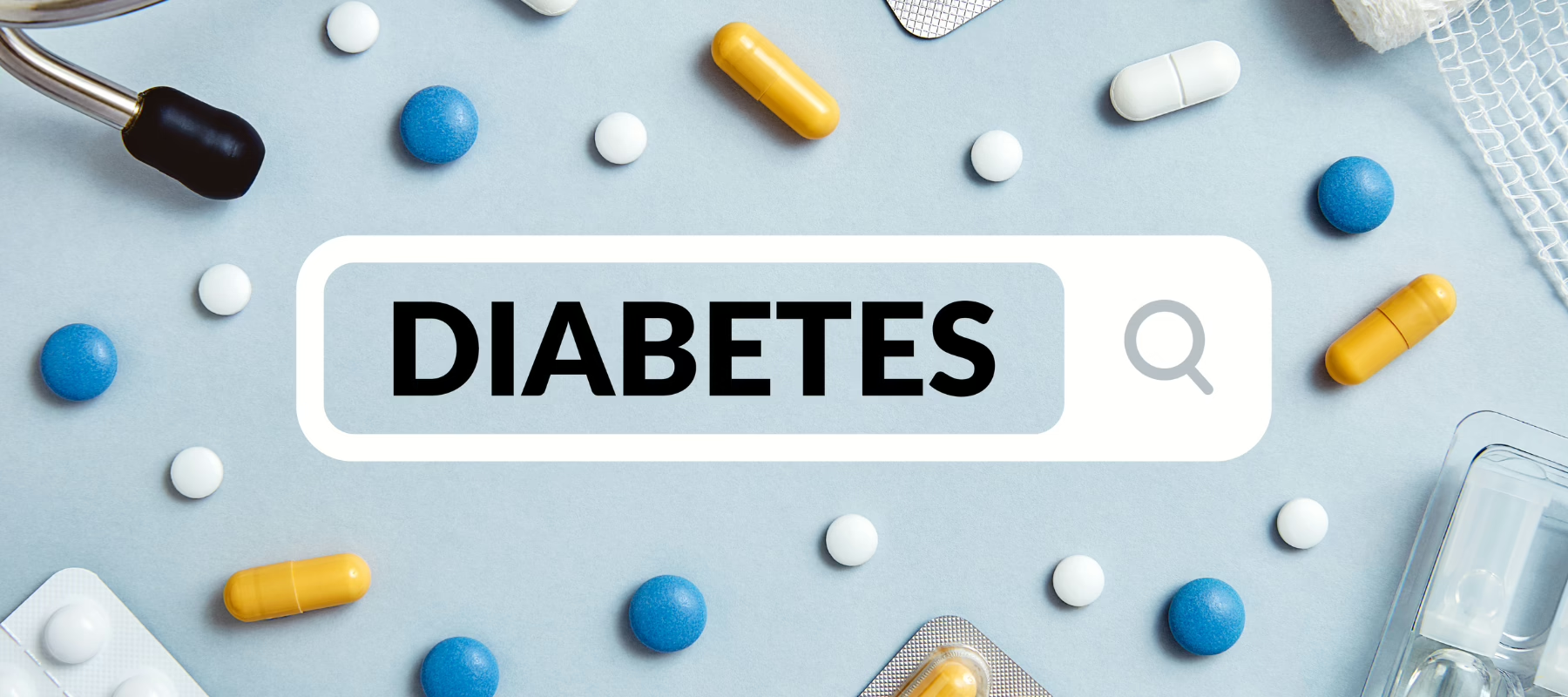Type 1 diabetes (T1D) is often misunderstood, even though millions of people around the world live with this autoimmune condition every day. Whether you’ve just been diagnosed, know someone with T1D, or are simply curious, getting clear answers to common questions can make a big difference. This blog post explores the five most frequently asked questions about T1D, busts persistent myths, and highlights how research is paving the way for better treatment and eventual prevention.
5 Most Common Questions About Type 1 Diabetes
1. What Causes Type 1 Diabetes?
Scientists haven’t pinpointed one single cause. Instead, type 1 diabetes develops when a genetic predisposition meets an outside trigger—often a viral infection, major stress, or another environmental factor—prompting the immune system to attack the pancreas. Having a family history increases risk, but not everyone with those genes will get T1D. Ongoing research aims to identify the exact triggers, improve screening (such as autoantibody tests for relatives), and ultimately find ways to prevent the disease.
2. Can People with T1D Lead a Full, Healthy Life?
Yes. With modern medical advancements and proper self-management, people with type 1 diabetes can live long, healthy, and active lives. Type 1 diabetes is a lifelong disease that requires ongoing management. While there is not yet a cure for T1D, treatment options have come a long way in terms of easing the daily burden of maintaining healthy glucose levels and researchers are investigating potential cures through beta-cell regeneration and immune therapies. Many athletes, actors, and public figures manage their T1D while pursuing demanding careers and lifestyles.
Help us continue advancing research and support by making a donation today.
3. What Are the Warning Signs of Type 1 Diabetes?
Be aware of the following symptoms, which often develop quickly and may indicate type 1 diabetes:
- Excessive thirst and urination
- Extreme hunger
- Unexplained weight loss
- Fatigue
- Blurred vision
- Irritability
- Fruity-smelling breath
Early symptoms of developing diabetes can be vague or mild, so awareness is crucial for early intervention. Both high blood sugar and low blood sugar can be dangerous, and early detection is important to prevent serious complications.
Early diagnosis is critical to avoid dangerous complications like diabetic ketoacidosis (DKA). A blood test is used to confirm the diagnosis, and blood tests can also help identify life-threatening complications such as DKA.
4. Do People with T1D Need to Avoid Sugar?
Not necessarily. People with T1D can eat sugar, but they need to monitor their carbohydrate intake and match it with the correct insulin dose. Monitoring food intake is essential for managing blood sugars and maintaining a healthy blood sugar level. The key is balance, not elimination. Education around nutrition and insulin timing is essential.
5. What’s the Difference Between Insulin Injections, Insulin Pumps, and Continuous Glucose Monitors?
Both methods deliver insulin, but they differ in how they work:
- Insulin Injections: Multiple daily shots (long-acting once/twice plus rapid-acting at meals or corrections). Simple and lower cost but involves needle sticks and fixed doses once given.
- Insulin Pump: Worn device delivering continuous rapid-acting insulin (basal) plus boluses at meals. Offers more precise, adjustable dosing and fewer injections but requires staying attached, site changes, and a higher cost.
- Continuous Glucose Monitor (CGM): Skin sensor reads glucose every few minutes, sending trends/alerts to a display or pump. Reduces finger pricks and helps guide dosing or automate pump adjustments; adds cost and occasional setup.
Many people pair a CGM with injections or a pump (“hybrid” systems) to improve control. There’s no one-size-fits-all: consider lifestyle, comfort with technology, and budget to find the routine that fits your needs.
Busting Common Type 1 Diabetes Myths
Myth 1: Only Children Get Type 1 Diabetes
While T1D is commonly diagnosed in children and teens, adults can develop it too. Adults may develop autoimmune diabetes (T1D)—even years after childhood—and a slower-onset form called Latent Autoimmune Diabetes in Adults (LADA) is often mistaken for type 2. Testing for autoantibodies helps distinguish adult-onset type 1 so insulin therapy isn’t delayed.
Myth 2: People with T1D Can’t Be Active or Play Sports
In fact, many elite athletes have T1D. With planning, monitoring, and insulin adjustments, physical activity is not only possible but encouraged for people with diabetes.
Myth 3: Insulin Is a Cure for Type 1 Diabetes
Insulin is a treatment, not a cure. People with T1D must carefully balance insulin doses with food, activity, stress, and illness to maintain safe blood sugar levels.
Myth 4: Type 1 and Type 2 Diabetes Are the Same
Despite similar names, the two diseases are quite different.
While both conditions involve blood sugar management, they differ significantly in cause, treatment, and progression. Type 1 requires lifelong insulin therapy, while type 2 can sometimes be managed with lifestyle changes and oral medication.
T1D is an autoimmune disease that occurs when the immune system attacks and destroys insulin-producing beta cells in the pancreas, resulting in no insulin production. Type 2 diabetes (T2D), on the other hand, is a metabolic disorder where the body either doesn’t produce enough insulin or its cells become resistant to the insulin that is produced altogether.
T1D usually develops in children or young adults, but can occur at any age, while T2D most commonly develops in adulthood, but increasingly affects children due to lifestyle factors.
This confusion often leads to misunderstanding and stigma.
Living with Type 1 Diabetes
How Is Type 1 Diabetes Managed Day to Day?
Daily life with T1D involves:
- Checking blood sugar regularly
- Administering insulin (via pump or injection)
- Counting carbohydrates
- Managing exercise, stress, and illness
Effective diabetes management is a comprehensive, individualized approach that involves working closely with a healthcare provider to tailor treatment strategies and monitor progress. It’s a 24/7 effort that requires constant awareness and planning.
Learn more about managing the constant mental burden of T1D.
“Each day begins and ends with thoughts of my blood sugar, and diabetes influences every aspect of my life—my exercise routines, dietary choices, social interactions, sleep patterns, and stress levels. There’s no clocking out. My body is constantly in conversation with machines, numbers and alerts so while they have brought me a lot of convenience, they haven’t brought peace.”
-Brooklynn, living with T1D since age 3
What Role Does Technology Play in T1D Care Today?
Advances in diabetes treatment technology have transformed daily management for many people with diabetes, including:
- Continuous Glucose Monitors (CGMs)
- Insulin pumps
- Smart pens
- Closed-loop insulin delivery systems
These tools can lighten the day-to-day burden and improve outcomes by providing real-time data, more precise dosing, and automated adjustments. However, they are not a cure, and access often depends on factors such as cost, insurance coverage, and regional availability.
DRC employee, Lauren, reflects on how far treatments have come:
“I remember when it was all long needles and vials. Countless times, my continuous glucose monitor has alerted me during severe lows at night—something I might not have caught on my own. It gives me a sense of safety and peace I didn’t have before. But many devices still need improvement to function reliably and consistently.”
What’s on the Horizon for T1D Treatment and Research?
DRC funds a range of early-career projects across cure and care, including but not limited to β-cell regeneration, immunotherapies, glucose-responsive insulin technologies, and preventive vaccines, alongside genetic studies, complication research, and biomarker development. Support for innovative, early-stage research is vital to unlocking a future cure.
Understanding T1D Starts with Asking the Right Questions
Asking questions and staying informed is the first step in understanding type 1 diabetes. We’ve explored what causes T1D, how it’s managed, and dispelled common myths. Whether you’re living with T1D or supporting someone who is, knowledge is empowering.
Join the Movement: Support Type 1 Diabetes Research
At Diabetes Research Connection, we fund innovative, peer-reviewed research focused on the prevention, treatment, and cure of type 1 diabetes. Your support can help accelerate life-changing breakthroughs.
Ready to make an impact?
Subscribe to our newsletter, share this blog post, or donate to support early-career scientists working toward a world without type 1 diabetes.



